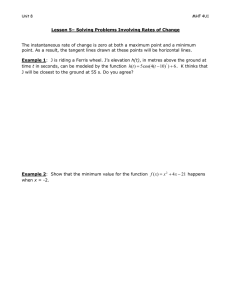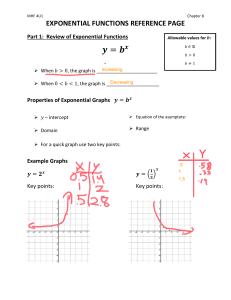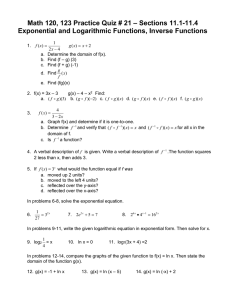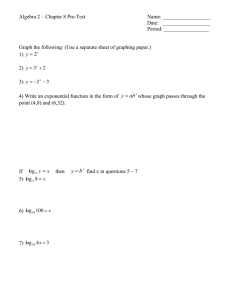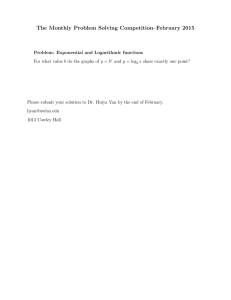Lesson 4– Rates of Change in Trig, Exponential and Logarithmic... The methods used to calculate the average rate of change... change can be applied to trigonometric, exponential and logarithmic functions.
advertisement
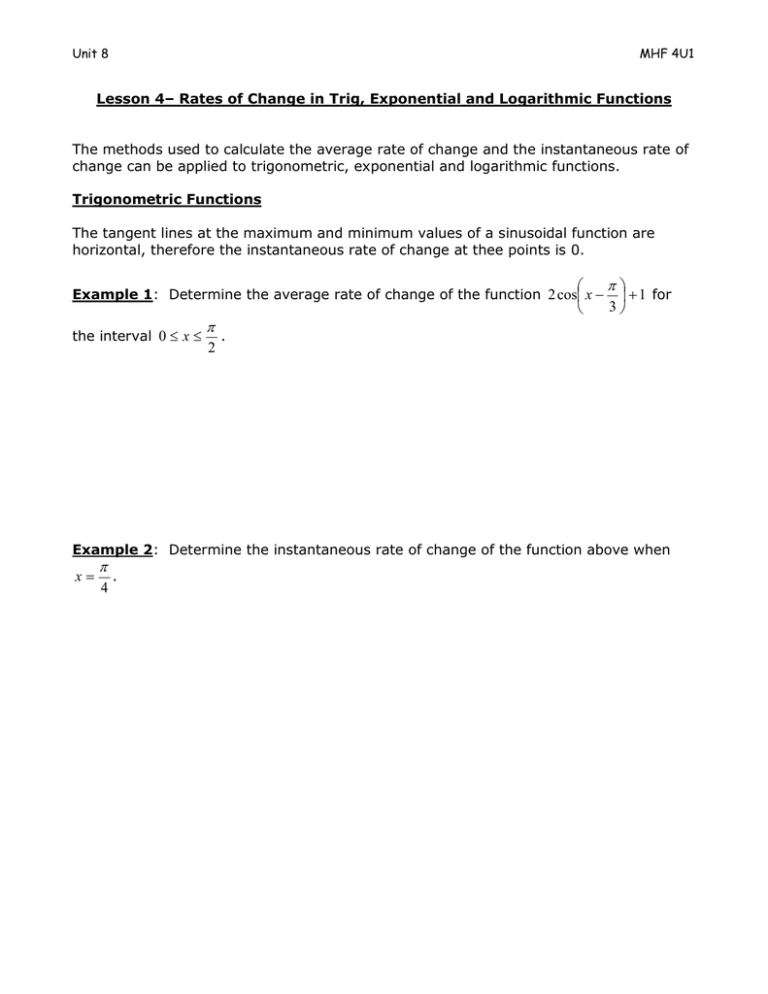
Unit 8 MHF 4U1 Lesson 4– Rates of Change in Trig, Exponential and Logarithmic Functions The methods used to calculate the average rate of change and the instantaneous rate of change can be applied to trigonometric, exponential and logarithmic functions. Trigonometric Functions The tangent lines at the maximum and minimum values of a sinusoidal function are horizontal, therefore the instantaneous rate of change at thee points is 0. Example 1: Determine the average rate of change of the function 2 cos x the interval 0 x 2 1 for 3 . Example 2: Determine the instantaneous rate of change of the function above when x . 4 Unit 8 MHF 4U1 Logarithmic and Exponential Functions The average rate of change is not constant for exponential and logarithmic functions. Example 3: The table shows how the mass of a chicken embryo inside an egg changes over the first 20 days after the egg is laid. a) Calculate the average rate of change in the mass of the embryo from day 1 to day 20. b) Determine an exponential equation that models the data. c) Estimate the instantaneous rate of change in mass on day 4.
